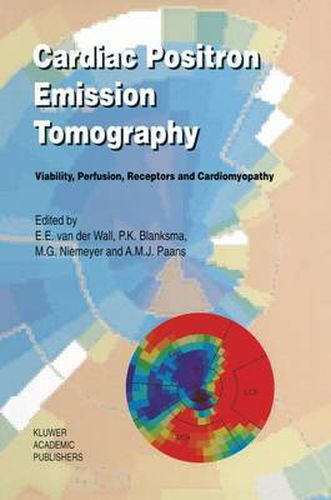Readings Newsletter
Become a Readings Member to make your shopping experience even easier.
Sign in or sign up for free!
You’re not far away from qualifying for FREE standard shipping within Australia
You’ve qualified for FREE standard shipping within Australia
The cart is loading…






Myocardial viability has become an important issue in clinical cardiology. In particular, absence or presence of viability may be decisive in patient management, and the decision to perform angioplasty (PTCA) or bypass surgery (CABG) is frequently based on the accurate assessment of viability. Although echocardiography and conventional nuclear medicine techniques may provide valuable information on viability, positron emission tomography (PET) is currently considered to be the standard for the assessment of myocardial viability. The simultaneous evaluation of myocardial metabolism and perfusion allows precise delineation and accurate quantification of residual myocardial viability in affected regions. In addition, accurate quantification of myocardial perfusion alone may provide insight into the basic mechanisms of syndrome X and may assist in the appropriate clarification of this clinically complicated, but frequently occurring, phenomenon. Besides that, cardiac PET may deepen insight into metabolism and perfusion of cardiac muscle disease, particularly in hypertrophic cardiomyopathy. Furthermore, receptor imaging studies with PET will become important as the study of cardiac neurohumoral regulation in heart failure has gained in interest. This text describes the most recent developments in cardiac PET as these are related to myocardial viability and myocardial perfusion studies of syndrome X . The value of PET for receptor imaging and cardiac muscle disease is also discussed.
$9.00 standard shipping within Australia
FREE standard shipping within Australia for orders over $100.00
Express & International shipping calculated at checkout
Myocardial viability has become an important issue in clinical cardiology. In particular, absence or presence of viability may be decisive in patient management, and the decision to perform angioplasty (PTCA) or bypass surgery (CABG) is frequently based on the accurate assessment of viability. Although echocardiography and conventional nuclear medicine techniques may provide valuable information on viability, positron emission tomography (PET) is currently considered to be the standard for the assessment of myocardial viability. The simultaneous evaluation of myocardial metabolism and perfusion allows precise delineation and accurate quantification of residual myocardial viability in affected regions. In addition, accurate quantification of myocardial perfusion alone may provide insight into the basic mechanisms of syndrome X and may assist in the appropriate clarification of this clinically complicated, but frequently occurring, phenomenon. Besides that, cardiac PET may deepen insight into metabolism and perfusion of cardiac muscle disease, particularly in hypertrophic cardiomyopathy. Furthermore, receptor imaging studies with PET will become important as the study of cardiac neurohumoral regulation in heart failure has gained in interest. This text describes the most recent developments in cardiac PET as these are related to myocardial viability and myocardial perfusion studies of syndrome X . The value of PET for receptor imaging and cardiac muscle disease is also discussed.